Basically, radio frequency (RF) refers to the oscillation rates in the range from 3 kHz to 300 GHz. In this frequency range, the energy of alternating current can radiate outward from the conductor as radio waves. RF signals find wide use in the telecommunications field. In order to transmit radio frequency current, different RF connectors are used to connect RF cables or equipment with less signal loss in a wide range of applications. Know more about RF connectors through this introduction.
What are RF Connectors?
RF connectors are used to establish electrical connections in radio frequency transmission systems. These RF connectors are often used with coaxial cables, hence they are also known as RF coaxial connectors. A typical RF connector consists of a center conductor, an outer conductor, and insulating materials, which together maintain the shielding of coaxial cables. The RF connector usually features a fastening mechanism and spring that help reduce insertion forces.
RF connectors come in both female and male types and are widely used in radio broadcasting, television receivers, communications, radar, aerospace, medical devices, measuring instruments, and other fields. They can also be used in non-RF applications for their superior shielding capabilities.
Some RF connectors require careful inspection and cleaning before use, along with meticulous mating to mitigate any potential effects on the system because of slight mechanical variations. For air-dielectric RF connectors, cleaning involves using clean, dry air.
RF Connector Gender
For standard polarity (SP) RF connectors, the male connector has a center pin, and the threads are inside the housing; the female connector has a hole in the middle to match the male connector, and the threads are outside the housing.
The gender configuration is quite different in reverse polarity (RP) RF connectors. For RP RF connectors, the male connector has a hole instead of a center pin, with the thread set inside the housing. Conversely, the female connector has a center pin and external threads.
In addition, there are also sexless RF connectors. Gender-neutral connectors mount flush rather than mating. These connectors typically have similar housing, allowing any two connectors to pair.

RF Connector Types
There is a wide range of coaxial connectors that differ in size, mating mechanism, operating frequency, applications, etc. The following section explores some of the most common types.
BNC Connectors
The miniature-size Bayonet Neil-Concelman (BNC) connector was developed in the 1940s, and it is one of the earliest and most popular RF connectors. BNC connectors are simple in structure, with a bayonet mount locking mechanism for quick connection/disconnection.
Features:
- Maximum Frequency: 4 GHz
- Maximum Voltage: 500 Volt
- Characteristic Impedance: 50 Ohm or 75 Ohm
- Coaxial Cables Commonly Used Together: RG59, RG6, RG11, ...
- Common Applications: video signals, timing and clock signals, amateur radio, instrumentation, test equipment, etc.
TNC Connectors
Invented in the late 1950s, Threaded Neil-Concelman (TNC) connectors are an upgraded variation of BNC connectors with threaded design to protect themselves. TNC connectors perform better than BNC connectors at microwave frequencies. These connectors are waterproof, suitable for high-vibration environments, and avoid radiation.
Features:
- Maximum Frequency: 11-12 GHz
- Characteristic Impedance: mainly 50 Ohm
- Common Applications: antenna, cellular base station, radar, etc.
SMA Connectors
SubMiniature version A (SMA) connector is a subminiature RF connector with a screw-type coupling design, commonly used in high-frequency applications. There are a lot of RP-SMA connectors on the market, so be careful to check the polarity to avoid misconnections. The SMA connector is rated for 500 mating cycles.
Features:
- Maximum Frequency: 18 GHz, and some can work at frequencies of up to 26.5 GHz
- Characteristic impedance: mainly 50 Ohm
- Applications: microwave circuitry, handheld radios, mobile telephone antennas, Wi-Fi antennas, radio astronomy, etc.
SMB Connectors
Developed in the 1960s, the SubMiniature version B (SMB) connector adopts a snap-on coupling mechanism. It is smaller than the SMA connector, suitable for low-frequency applications that require quick and simple connections.
Features:
- Maximum Frequency: 0-4 GHz
- Characteristic Impedance: 50 Ohm or 75 Ohm
- Coaxial Cables Commonly Used Together: RG174, RG316, ...
- Common Applications: low-power communication systems, base stations, medical equipment, radios, etc.
N-type Connectors
The type-N connector, named after its inventor Paul Neill, is a medium-sized RF connector larger than the BNC connector. N connector features a threaded-locking and waterproof design, which are preferred in RF testing thanks to its durability.
Features:
- Maximum Frequency: 11 GHz, and some can work at frequencies of up to 18 GHz.
- Characteristic Impedance: 50 Ohm or 75 Ohm
- Coaxial Cables Commonly Used Together: RG8, RG213, LMR-400, ...
- Common Applications: RF equipment, satellite and radar systems, CATV systems, microwave instruments, amateur radio equipment, etc.
UHF Connectors
The threaded UHF connector is an RF connector originally invented for military applications. They can also be known as PL259 connectors (plugs) or SO239 connectors (sockets). Since its surge impedance is not constant, this connector can only be used in a limited frequency range.
Features:
- Maximum Frequency: 100 MHz
- Characteristic Impedance: non-constant
- Coaxial Cables Commonly Used Together: RG58, RG8, LMR-195, LMR-400, …
- Common Applications: amateur radio, citizens band radio (CB radio), marine VHF communication system, etc.
FME Connectors
The For Mobile Equipment (FME) connector is a subminiature RF connector designed for RG-58 or equivalent RF coaxial cables. This small threaded connector meets the needs of mobile devices with tight mounting spaces
Features:
- Maximum Frequency: 200 MHz, and some can work at frequencies of up to 2.4 GHz
- Characteristic Impedance: 50 Ohm
- Common Applications: vehicles, boats, mobile phones, portable transceivers, etc.
MCX Connectors
The Micro Coaxial (MCX) connector has a similar structure but smaller size compared to SMB connectors. This snap-on small RF connector is ideal for installation in tight places. The MCX connector also comes in a common smaller version called the MMCX connector.
Features:
- Maximum Frequency: 6 GHz
- Characteristic Impedance: mainly 50 Ohm
- Coaxial Cables Commonly Used Together: RG316, RG174, RG188, ...
- Common Applications: cellular telecom equipment, GPS receivers, data telemetry, tuners, etc.
5 Things to Consider When Selecting RF Connectors
Now that you have a deeper understanding of RF connectors and their types, let us clarify how to make a good selection. Choosing the right RF connector requires considering several factors, including coupling mechanism, electrical performance, environmental suitability, economic factors, etc. Let’s delve into these aspects.
Material and Construction
Commercial RF connectors usually use more cost-effective materials compared to those with military standards. Commonly used conductor materials include brass, copper alloys, and stainless steel plated with gold, silver, or nickel. Insulation is usually made of materials like PTFE, PP, HIPS, and PEI. Choosing the right connector material is crucial as it can affect performance and durability. Conductor and dielectric insulation materials can affect the insertion loss, ultimately resulting in signal degradation.
RF connectors come in a wide range of sizes, including standard, miniature, subminiature, micro, etc. Connectors matching the cable diameter can minimize signal reflections, while miniaturized connectors are suitable for small devices but may be less durable for frequent plugging and unplugging. For example, if you are seeking RF connectors for RF equipment, choose connectors that can withstand thousands of mating cycles.
RF connectors are also available in various coupling mechanisms for different needs, such as bayonet, threaded, push-on, quick lock, and snap-on types. The bayonet and push-on types facilitate a quick connection, while the quick-lock and snap-on types enhance the firmness and reliability of the connection. The threaded type is the most commonly used coupling mechanism for RF connectors and is highly resistant to vibration environments.

Electrical Parameters
RF connectors have a specific operating frequency range, so it is important to consider the application’s frequency when selecting a connector. SMA connector is a good choice for many applications because of its wide frequency range.
The consideration of impedance is also crucial for different applications. The characteristic impedance of the RF connector should be consistent with the system and cable to achieve optimal transmission and reduce power loss. For example, BNC and F connectors are often used in 75 ohms applications.
Environmental Factors
The temperature of RF connectors can be influenced by the ambient temperature and the temperature of connected devices. Ensure that the operating temperature of the RF connectors is suitable to avoid damage. For outdoor use, opt for these moisture and corrosion-resistant connectors to ensure durability and reliability.
Compatibility and Standard
Ensure the RF connector type is compatible with existing connectors or devices, including the mechanical structure and electrical parameters. Be careful when mating different connectors and consider using an RF adapter to convert from one connector type to another if necessary.
Different projects may require RF connectors to comply with specific standards, such as MLC, DIN, BS, IEC, and IEEE. And you should make sure that the RF connector meets the standard requirements for the entire system.
Cost
You should always consider the cost when selecting RF connectors. SMB connectors can be a bit more expensive than other RF connectors, while N-type and BNC can be more cost-effective.
Summary
RF connectors come in various types and are widely used in high-frequency applications. Understanding relevant knowledge is essential for the selection and utilization of suitable RF connectors. Also, proper maintenance helps keep your RF connectors in good condition.
For more information on this topic, you can keep up on our blogs. While VCELINK offers general and basic information for our customers and other visitors to the website, it’s not professional advice.
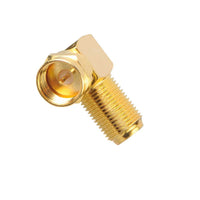
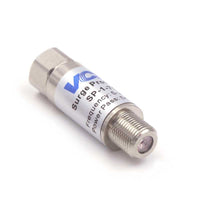
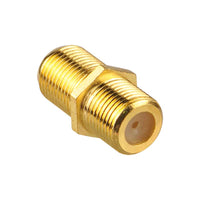

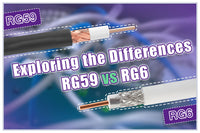
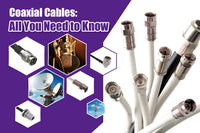
Excellent blog on RF connectors are essential for maintaining signal integrity in any wireless setup. At Eteily Technologies, we manufacture a wide range of precision RF connectors including SMA, TNC, N-Type, MCX, and MMCX — designed for low insertion loss, strong mechanical stability, and long-term reliability.”
Excellent article! RF connectors are essential for maintaining signal integrity in any wireless setup. At Eteily Technologies, we manufacture a wide range of precision RF connectors including SMA, TNC, N-Type, MCX, and MMCX — designed for low insertion loss, strong mechanical stability, and long-term reliability.
This post highlights some very important aspects of RF Connectors and Adapters. At Eteily Technologies, we deliver tailor-made cable solutions using RG174, RG58, and other coaxial types, ensuring stable connectivity for antennas, modems, and IoT devices.
Excellent article! RF connectors are a crucial part of any wireless system, ensuring minimal signal loss and strong connectivity. At Eteily Technologies, we design and manufacture a wide range of RF connectors including SMA, TNC, N-type, and MCX — all engineered for high durability, low VSWR, and superior performance across communication applications